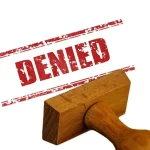Patent Wars: How Big Corporations Use Patents to Stifle Innovation
- August 2, 2024
- By Sarita Thomas
- Read 4 minutes
Patents are crucial tools for protecting intellectual property and driving technological advancements. However, the power of patents can be wielded in ways that stifle innovation rather than foster it. Large corporations, in particular, have been known to exploit the patent system to block competitors and suppress emerging technologies – the practice known as ‘patent abuse’. This article explores how big corporations can misuse patents, discusses the ethical implications of such strategies, and proposes reforms to ensure that patents serve their intended purpose of promoting innovation.
Misuse of Patents by Large Corporations
Large corporations often use their extensive patent portfolios strategically to maintain market dominance and promote patent abuse. This tactic involves acquiring patents not just for their innovative potential, but to prevent competitors from entering the market. One prominent example is the “patent thicket,” a situation where a dense web of overlapping patents can make it difficult for new entrants to enter the legal landscape. For example, in the technology sector, companies like Apple and Samsung have engaged in prolonged patent disputes, using their patents to limit each other’s market access and discourage competition.
In the pharmaceutical industry, patent strategies can be even more egregious. Companies may engage in “evergreening,” where they make minor modifications to existing drugs to extend patent protection and delay the entry of generic competitors. This practice not only stifles innovation but also keeps drug prices high, adversely affecting public health and increasing costs for consumers.
The US Patent and Trademark office (USPTO) grants patents on new and novel inventions, such as the active ingredient of a lifesaving drug – this is the “parent patent.” But certain pharma companies can build patent thickets by making small changes to a parent patent and subsequently applying for “off-spring patents.” USPTO may reject some off-spring patent applications because they have been deemed not different enough or not “patentably distinct” from the parent patent. To circumvent a rejection of such a patent application, companies sometimes file terminal disclaimers on these off-spring patents applications. Terminally disclaimed patents have the same patent protection period as the parent patent but allows Pharma companies to build a thicket around the parent patent. Challenging the validity of an off-spring patent is costly and time consuming, because a generic or biosimilar that seeks to challenge the validity of an off-spring patent must invalidate every single patent in a thicket.
Ethical Implications of Patent Strategies
The ethical concerns surrounding patent misuse are significant. When large corporations employ patents to hinder competition, they undermine the very principles of innovation and progress. In the tech industry, such practices can slow down the development of new technologies and prevent smaller firms from contributing groundbreaking innovations. The result is a less dynamic and less competitive market, which ultimately harms consumers.
Similarly, in pharmaceuticals, the use of patents to delay generic drug entry raises serious ethical questions. While patenting is meant to reward innovation and ensure that inventors can recoup their investments, manipulating the system to maintain monopolies can lead to excessive drug prices and limit access to essential medications. This behavior of certain companies reflects a broader issue of balancing intellectual property rights with public welfare. There have been bills presented in the US senate to address such kinds of misuse by corporations. A bill is presented recently that streamlines patent litigation by limiting the number of patents per patent thicket a pharmaceutical company can assert to one. This reduces the burden on generic and biosimilar companies. Patent holders who have created a thicket would only be allowed to assert one patent per thicket in litigation. They may choose which patent from each thicket to assert to protect their invention.
Proposing Reforms to Prevent Patent Abuse
To address these concerns, several reforms are necessary to ensure that patents promote rather than hinder innovation. Here are a few recommendations:
- Strengthening Patent Quality: Improving the quality of patent examinations can help prevent the issuance of overly broad or vague patents. Enhanced scrutiny during the patent drafting process, especially for non-provisional patents, can reduce the likelihood of patents being used to stifle competition.
- Encouraging Transparency: Implementing measures to increase transparency in patent filings and ownership can help identify and challenge abusive patent practices. Clear disclosure of patent rights and usage can deter companies from engaging in strategies designed solely to impede competition.
- Promoting Patent Reform Legislation: Governments should consider reforms to address specific abuses within the patent system. For instance, legislation that limits the ability of companies to engage in patent thickets or evergreening could help ensure that patents are used as intended— to encourage and protect genuine innovation.
- Supporting Smaller Innovators: Providing support and resources for smaller companies and startups can help level the playing field. Access to affordable patent drafting services and legal assistance can enable smaller players to navigate the patent landscape effectively and compete with larger corporations.
By addressing these issues, the patent system can be reformed to better serve its purpose of facilitating innovation and ensuring fair competition in the United States. Large corporations must be held accountable for their misuse of patents. Reforms must be implemented to prevent abuse while promoting a dynamic and competitive market environment thereby fostering healthy competition and innovation among the industry players.




